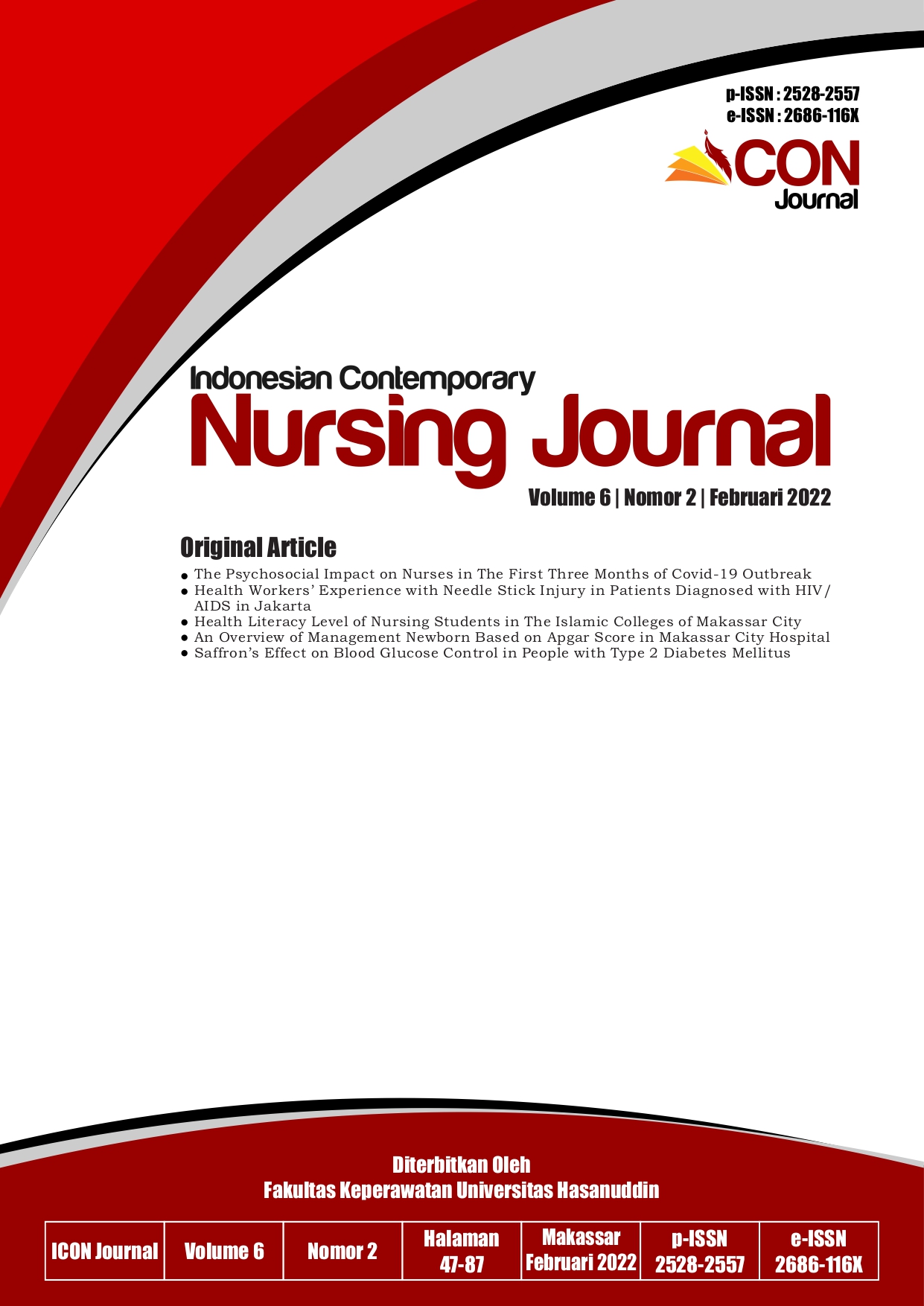Health Literacy Level of Nursing Students in The Islamic Colleges of Makassar City
Keywords:
Keywords: Health Literacy , Nursing Students, Islamic collegeAbstract
Introduction. Health literacy is the level of an individual's ability to obtain, process, and understand basic health information and services needed to make appropriate health-related decisions. Nursing students need to understand health literacy in order to prepare themselves to become educative health professionals. Therefore, the researcher intends to conduct research on the level of health literacy of nursing students at the Islamic College of Makassar City. Method. This study uses a quantitative research design with descriptive research methods. The number of samples is 235 people. Result. Analysis of the data found that there was a difference between the level of health literacy between age (p=0.851), gender (p=0.965), semester level (p=0.316), nursing students at Makassar City Colleges. However, there is no significant difference. Conclusion. The need for a compulsory learning program or some kind of special curriculum that discusses health literacy at the academic stage. It is hoped that this related research can to be dug again in depth like finding out what factors which is the cause of universities being found have low health literacy in this study or developed by increasing the number of respondentsDownloads
Download data is not yet available.
Dimensions
Published
2022-02-28
How to Cite
Pagesa, S. B. F. ., Harisa, A., Nurdin, N., Sangkala, M. S., & Malasari, S. . (2022). Health Literacy Level of Nursing Students in The Islamic Colleges of Makassar City. Indonesian Contemporary Nursing Journal (ICON Journal), 6(2), 62-69. https://doi.org/10.20956/icon.v6i2.14122
Issue
Section
ARTICLES
Copyright & Licensing
Authors who publish with this journal agree to the following terms:
Authors retain copyright and grant the journal right of first publication with the work simultaneously licensed under a Creative Commons Attribution License that allows others to share the work with an acknowledgement of the work's authorship and initial publication in this journal.
Authors are able to enter into separate, additional contractual arrangements for the non-exclusive distribution of the journal's published version of the work (e.g., post it to an institutional repository or publish it in a book), with an acknowledgement of its initial publication in this journal.
Authors are permitted and encouraged to post their work online (e.g., in institutional repositories or on their website) prior to and during the submission process, as it can lead to productive exchanges, as well as earlier and greater citation of published work (See The Effect of Open Access).
Authors retain copyright and grant the journal right of first publication with the work simultaneously licensed under a Creative Commons Attribution License that allows others to share the work with an acknowledgement of the work's authorship and initial publication in this journal.
Authors are able to enter into separate, additional contractual arrangements for the non-exclusive distribution of the journal's published version of the work (e.g., post it to an institutional repository or publish it in a book), with an acknowledgement of its initial publication in this journal.
Authors are permitted and encouraged to post their work online (e.g., in institutional repositories or on their website) prior to and during the submission process, as it can lead to productive exchanges, as well as earlier and greater citation of published work (See The Effect of Open Access).
Most read articles by the same author(s)
- Faradiba Faradiba, Ariyanti Saleh, Akbar Harisa, Emotional Maturity of Teenagers Who Have Mothers as Single Parents in SMA Negeri 1 Maiwa Enrekang , Indonesian Contemporary Nursing Journal (ICON Journal): Volume 1 No. 1 Agustus 2016
- Fiqriatul Hidayah, Nuurhidayat Jafar, Silvia Malasari, Mabbakkang Tradition and Its’ Effects on Health of Villagers of Bacu Bacu Pujananting Barru: A Qualitative Study , Indonesian Contemporary Nursing Journal (ICON Journal): Volume 2 No. 2 Februari 2018

